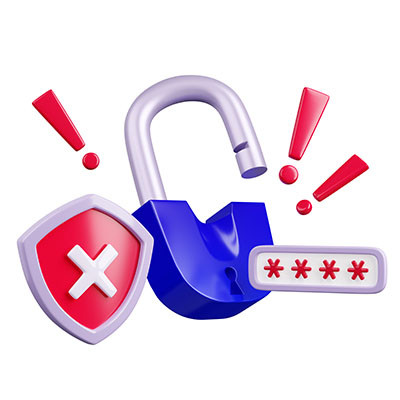JS Business Solutions Blog
Cybersecurity is a complicated beast. Not only do you have to be sure that you’re protected from threats coming from outside your business, there are also a few very real threats that can originate from inside your business, too. Both are critical to prevent, which can be quite effectively accomplished via a zero trust approach to your security.
The Internet of Things, or IoT for short, showcases just how much a little bit of Internet connectivity can do to help make certain devices much more interesting and useful, but at the same time, it also has brought about a considerable security concern. How are you preventing these devices from ravaging your network security, and what can you do to stop it from putting your company at risk?
A modern network, when properly configured and protected with modern cybersecurity tools, can be extremely secure. Since that’s been the trend for some organizations over the years, hackers have been looking for ways around the security many businesses have in place. If hackers can’t break in through normal means, they will turn to other, more insidious methods, like phishing attacks, to get what they are after.
The Federal Trade Commission has developed their Safeguards Rule for one purpose: To set up a guideline on how to interact, store, and use customer information. The FTC enacted the Rule in 2003, but it was heavily amended in 2021 to ensure that it keeps up with the technology used by businesses today. It outlines the policies and procedures that all covered companies need to enact.
For the growing business, doing the right things to secure your network and data is a constantly evolving situation. For larger businesses, they tend to approach the situation with a different perspective. They plan out the whole process. This is what is called enterprise security. Let’s take a look at what enterprise security entails and how the little guy can benefit from doing things like larger companies do them.
There are a huge number of apps available on the various app stores—3.5 million and 1.6 million on the Google Play store and Apple’s App Store, respectively—and, while most of them are sufficiently secure to use, many of them aren’t. It can be hard to tell the difference between the two at times, so it is important that you and your team are protecting your business however you can. Let’s discuss the topic of security, as it pertains to mobile app stores, and why the issues have transcended security.
Cybersecurity has gradually become more and more of a focus for modern businesses as threats to their data and general operations have mounted over time. This means that businesses need to approach their security with a multifaceted strategy, involving a combination of the right tools and IT support and the training to use them. Let’s take a few moments to dive into security training and why it is so critical.
Uh oh. You were trying to be more secure and decided to set up multi-factor authentication. However, you’ve just discovered how important the other factors are when it comes to authenticating your identity. Yes, you’ve found yourself unable to access your means of authenticating yourself.
So…what do you do now?
Phishing is a word that has a couple of different meanings, depending on the spelling and context. Fishing, like the act of sitting down with a pole and trying to catch a fish, can be a relaxing, leisurely activity. Phishing, with a “ph,” is anything but that, and it can be a tiring and scary situation to navigate—particularly if you or one of your employees have fallen victim to an attack.
Phishing is a pressing issue for everyone, not just businesses. The main problem is that the phishing messages keep getting more and more sophisticated and keep coming and coming until, eventually, something negative happens. For this week’s tip, we wanted to discuss the different types of phishing you can encounter.
Admit it, you don’t know all that much about cybersecurity. In this blog, we spend a lot of time discussing security issues. After all, today there are more threats than ever and many different types of problems that IT administrators, business decision-makers, and even individual employees have to deal with. Over the next two weeks, we have decided to discuss the reality of cybersecurity and what you need to know to get out in front of it.
We make a consistent point to urge our readers to take their organizational cybersecurity seriously. This is because there are threats out there that are targeting your business, no matter how small it is. This week, we take a break from the itemized list of security tips to present 2022’s most devastating cyberattacks to give you an idea what hackers today can do.
The COVID pandemic forced businesses all over the world to adopt remote work practices, whether they were ready for them or not, and it wound up establishing full-fledged remote and hybrid positions which may never have existed otherwise. However, with these new developments come new threats, and you need to be ready to handle them as they crop up.
In our blog, we talk about security and data breaches all the time. We tell you how you can take efforts to avoid them and how to prepare your organization for the inevitability of being exposed to them. With all that security talk, we should briefly describe the difference between a security breach and a data breach, because they are two different things that get lumped together quite a bit.
Back in December of 2021, an API vulnerability impacting Twitter was disclosed. Just a few months later, in July, data from more than 5.4 million users—obtained through this vulnerability—was put up for sale, and more recently, another hacker shared the data online. Let’s take the opportunity to examine the concept of an API attack, and what can and should be done to stop them.
While it may not be the first target one might think of when it comes to cyberattacks, a recent Distributed Denial of Service (DDoS) attack on the Vatican’s official website only proves that cyberattacks can potentially influence any organization. Let’s consider the situation, as well as what lessons we can all take away from it.
There are countless known threats out there that create security headaches for network administrators, but it’s not the known flaws that are the most dangerous; it’s the unknown ones that have even more potential to derail operations, expose sensitive data in security breaches, and end businesses entirely. These zero-day flaws or exploits are extremely important to keep informed about.






















